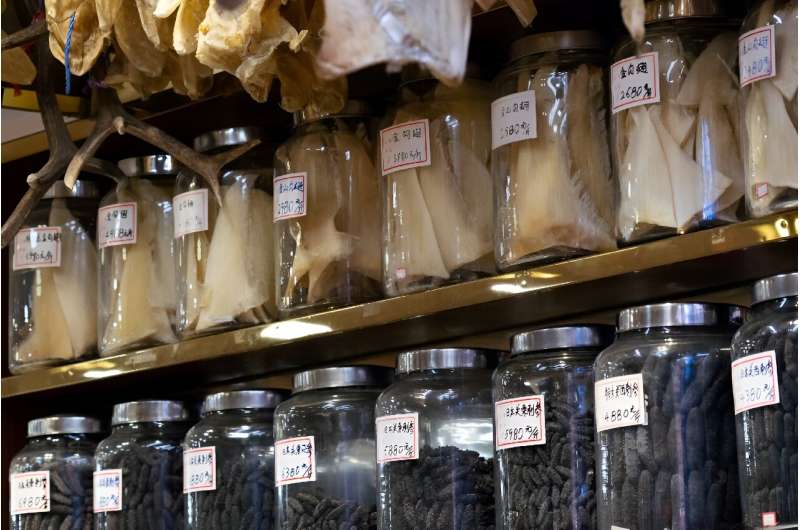This article has been reviewed according to Science X's editorial process and policies. Editors have highlighted the following attributes while ensuring the content's credibility:
fact-checked
reputable news agency
proofread
Hong Kong adds two shark families on controlled trade list

Hong Kong on Friday added two major shark families to a list of endangered animals whose trade in the city will be tightly controlled under CITES regulations.
The city is one of the world's largest markets for shark fin, which is viewed by many Chinese communities as a delicacy and often served as a soup at expensive banquets.
Its trade is regulated under an international treaty on endangered species that requires export permits proving it was sustainably captured.
CITES (Convention on International Trade in Endangered Species of Wild Fauna and Flora)—the treaty's governing body—approved in November a plan to include the requiem shark and the hammerhead shark families on their list, which includes more than 50 species.
Hong Kong amended its list of endangered species "to give effect to the latest regulations of CITES on the controlled species", a spokesman for the city's agriculture, fisheries and conservation department said on Friday.
The new protected species list includes the two shark families, as well as various types of turtles and stingrays, according to the statement.
Domestic consumption has shrunk after years of activist campaigning, but Hong Kong remains a vital trade hub for shark fins—both legal and illegal—headed for the Chinese mainland and Southeast Asia.
Marine experts in Hong Kong say the majority of shark fins consumed in the city are blue sharks—which are part of the requiem family.
"Before the two families were covered, around 20 percent of the shark fins imported to Hong Kong were under control. But now with the two families, up to 90 percent would come under control," Stan Shea, marine program director for the BLOOM Association, told AFP.
He added that effective regulation would depend on the government training up frontline officers on the visual inspection and DNA examination of the fins, in order to identify the protected species.
Marine biologists estimate that more than 100 million sharks are killed each year, pushing vital apex predators towards extinction and ocean ecosystems to the brink of collapse.
Those killed for their fins have the appendage sliced from their bodies before being thrown back into the sea, where they suffer a slow death.
© 2023 AFP




















